July 31, 2008
The Serenity of Borobudur Buddha Statue
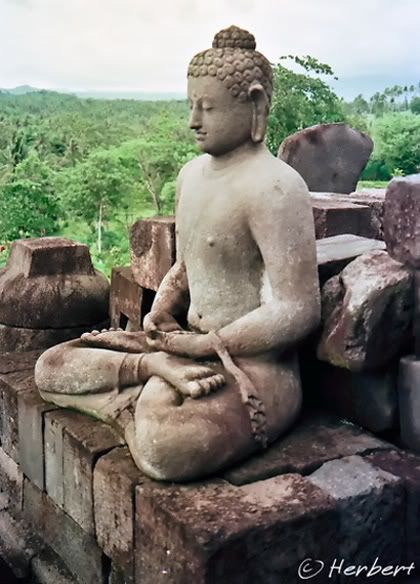
Location: Borobudur, Central Java, Indonesia (7° 36′ 28.8″ S, 110° 12′ 0″ E)
Date: 22 December 1995; 10.15am
Camera: (analogue) Canon EOS 500N on negatives and scanned
I revisited Borobudur again a couple of weeks ago and still enjoy the place's spirituality (not that I am religious at all).
There were three of us and we wanted to stay at the Manohara Hotel which is within the grounds of the park; however we could not get a room. The advantage of staying at the hotel is unlimited free entry to Borobudur during the 2 days and at discounted rate for the Sunrise Entry. This is actually a very good deal especially if there are two persons since the deal includes free (apparently pretty good) breakfast and reasonably good accommodation.
July 30, 2008
David of Michelangelo- a feminine touch of the perfect man
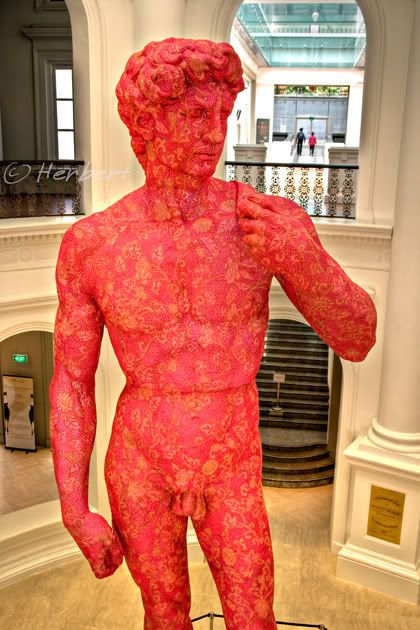
Location: Singapore National Museum (1° 17′ 48.2″ N, 103° 50′ 55.1″ E)
Date: 21 March 2008; 12.45pm
Camera: Canon 400D with Sigma 17-70/f2.8-4.5
A different perspective of the famous David statute of Michelangelo; this one is covered by a flowery layer of textile, reminiscent of traditional handmade brocade, commonly used for the baju kebaya, a customary women’s blouse. In this novel garb, Indonesian artist Titarubi uses David to explicitly express attributes of femininity.
July 26, 2008
Fujian Hakka Tulou, China's new entry to the UNESCO Heritage List
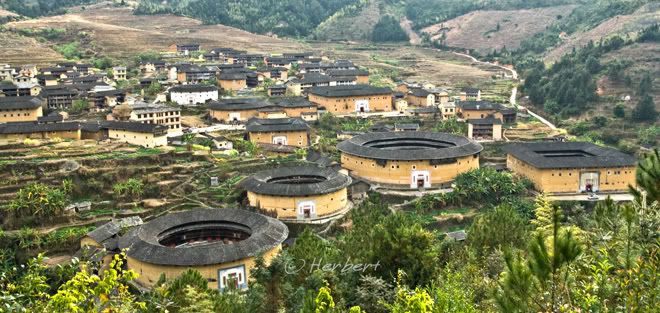
Location: Hakka Tulou, Yongding, Fujian, China (24°38'14.18"N 116°54'27.63"E)
Date: 11 December 2007, 3.20pm
Camera: Canon 400D with Sigma 17-70/f2.8-4.5
Hakka客家 (in Cantonese) or Kejia (in Putonghua) is a subgroup of the Chinese Han. They are found mainly in the southern provinces of Guangdong, Fujian Jiangxi and Guangxi. Many of them still lives in traditional communal buildings known as Tulou土楼, literally meaning “earthen buildings”. Tulou’s come in various shapes and sizes but the most unique and well-known are the circular ones as seen in this photo. Tulou’s are mainly enclosed circular or rectangular, designed in such a way mainly as a defensive construction. There are still quite a few tulou’s in these parts of China but their number is dwindling due to neglect and residents choosing to stay in modern concrete buildings. A good article on the tulou can be found here.
The Fujian Tulou had just been inscribed as a UNESCO Heritage Site this month (China has the third largest number of UNESCO Sites at 37 after Italy, 43 and Spain, 40). It is hoped that such a recognition will ensure that they will be properly maintained, now with access to international protection and funds. However I cannot be optimistic looking at the record of tourism developments in China over the last few years. Whenever a destination became a UNESCO Site, it attracts hordes of Chinese tourists despite local authorities invariably jacking up the prices of visiting such destinations when they became a UNESCO Site, adding immense pressure to the site maintenance. Moreover, local authorities had in many occasions forcibly expelled residents in and around such sites in the name of preservation; in the process uprooting traditions and culture related to a site that dates back centuries- ironically these are itself part of the reasons why a site was listed as the UNESCO site in the first place.
July 24, 2008
Ice block on the road between Manali and Leh, India
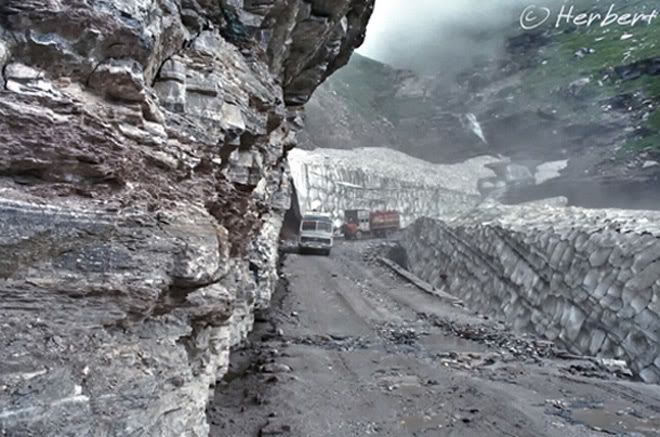
Location: Road between Manali and Leh, Ladakh, India (32°22'60 N 77°15'0 E)
Date: 21 August 1998; 11.20am
Camera: (analogue) Canon 500N with negatives and scanned
This is only one of two roads that leads to Leh in the district of Jammu and Kashmir. It crosses some of the highest mountain passes in the world, including Lachulung La (5,059 m) and Taglang La (5,325 m). It is open only between June and mid-September when snow is cleared from the road by the Border Roads Organisation. This include cutting through gigantic blocks of ice that tumbles down from mountainsides onto the road such as the above. The journey between these two towns normally takes two days but can be longer depending on road conditions.
July 21, 2008
The Incredible Hulk, Universal City, Los Angeles

Location: Universal City, Los Angeles, California, USA (34° 8′ 20″ N, 118° 21′ 9″ W)
Date: 4 September 2006; 11.45am
Camera: Canon EOS 300D with kit lens
The new movie version of "The Incredible Hulk" had just been r4leased worldwide. I believed this is the second movie version. I have not seen it but I hope it is better than the disaster previous version done by director Ang Lee. I also wonder if the current version of The Hulk is anything like the look of Lee's version which is conspicuously displayed at the Universal City.
July 18, 2008
The summit of K2, world's 2nd highest mountain, Pakistan
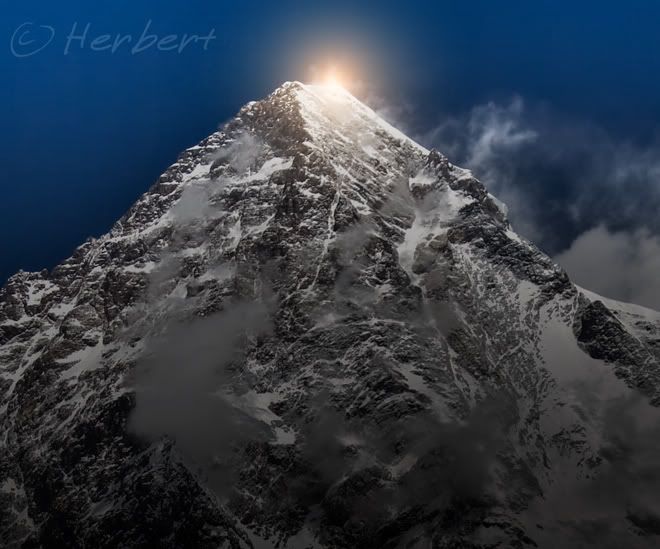
Location: K2 summit from Concordia, Pakistan (35° 44′ 0″ N, 76° 31′ 0″ E)
Date: 9 July 2007; 5.45pm
Camera: Canon 400D with EF 70-200/f4 IS L
This is the summit of K2, the second highest mountain in the world,. This was taken from Concordia, the confluence of the Baltoro Glacier and the Godwin-Austen Glacier, in the heart of the Karakoram range of Pakistan. This photo is the result of post-processing; there was no perfect reflection of the sun at the summit at that moment. But it definitely look dramatic.
July 15, 2008
Deities at Sri Krishnan Temple, Singapore
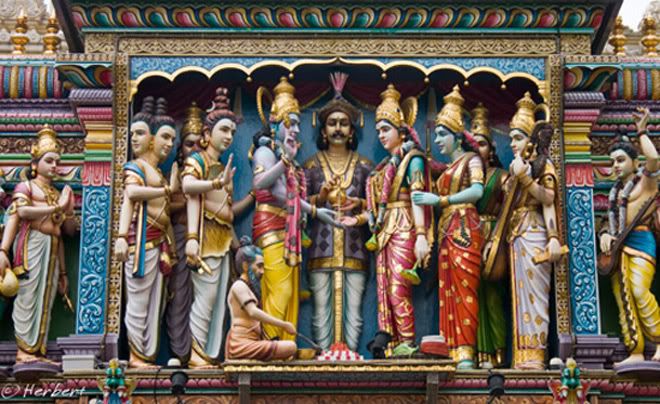
Location: Sri Krishnan Temple, Singapore (1°18'1.98"N 103°51'10.58"E)
Date: 6 January 2005; 4.30pm
Camera: Canon IXUS IZoom
Sri Krishnan Temple is a major Hindu temple in Singapore, being dedicated to Krishna, the ninth incarnation of Vishnu. The temple’s origins in 1870 were modest. A large banyan tree (now gone) was the congregation point for many of the Hindu labourers that lived and worked in the neighbourhood. A wealthy merchant, Mr. Hanuman Beem Singh, realized that these men needed a place to worship and had two deities built along the base of the tree. Some years later a larger platform was built to place a deity of Lord Krishna. The temple had since undergone several renovations over the years.
Renovations and additions are very important to Hindu temples, often occurring at least once every 12 years in ceremonies meant to symbolize ritual purification. This is why the deity representations around this temple retain their paint and colours. Nowadays the temple also benefits from its location next to the Kwang Im Temple; hordes of Buddhist/Taoist devotees and/or tourists pray at the temple after or before visiting the neighbouring Kwang Im Temple.
July 12, 2008
Poppy Flowers that produces opium in Mae Hongson
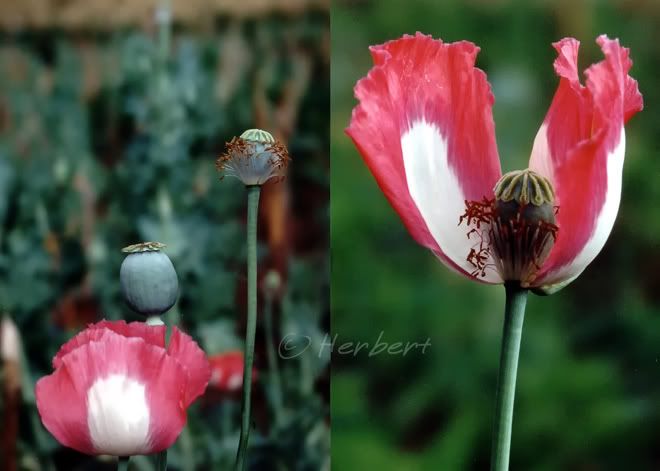
Location: Mae Hongson, Thailand (18° 45' 0 N 97° 55' 0 E)
Date: 1 November 1995; 3.45pm
Camera: (analogue) Minolta compact with negatives and scanned
Mae Hongson in northern Thailand is fast becoming a tourist destination in the last few years. Tourists visit the town for its cool climate (being high altitude) and its variety of temple of different designs. However it is also very close to the Golden Triangle- borders of Thailand, Myanmar and Laos- which is one of the biggest area for poppy cultivation. The latex produced within the seed pods of the poppy flower is extracted to produce opium, morphine and heroin. It is illegal to grow poppies in Thailand but one can find them being cultivated widely in this part of the country by farmers, normally disguised behind plots of chilies and other plants. Poppy flowers itself is actually quite an attractive-looking flower.
July 9, 2008
Neptune Fountain, Bologna, Italy
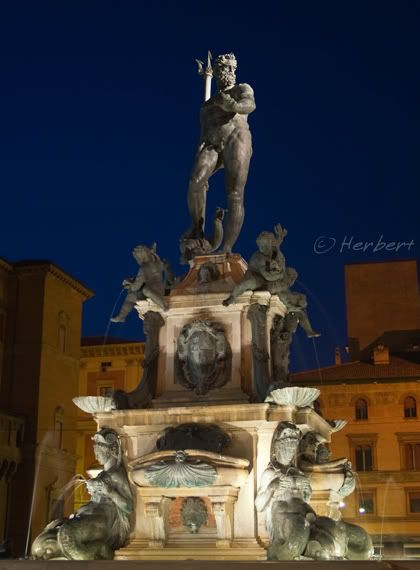
Location:Neptune Fountain, Piazza del Nettuno, Bologna, Italy (44° 30′ 27″ N, 11° 21′ 5″ E)
Date: 19 March 2005; 7.05pm
Camera: Canon 300D with kit lens
Bologna, the "Red City" is home to the oldest university in the Western world, "Alma Mater Studiorum", founded in 1088. It is also one of the most pleasant cities I visited in Italy. Its cuisine is simply, heavenly. It is widely known as the Red City because most of its buildings are of a red hue and also its left-leaning political tradition. The city is also full of fabulous monuments and buildings including this Neptune Fountain built in 1563 and Bologna's very own leaning tower- which is taller than the Leaning Tower of Pisa and it is still leaning.
July 7, 2008
Centuries-old cobblestone streets of Lijiang, China
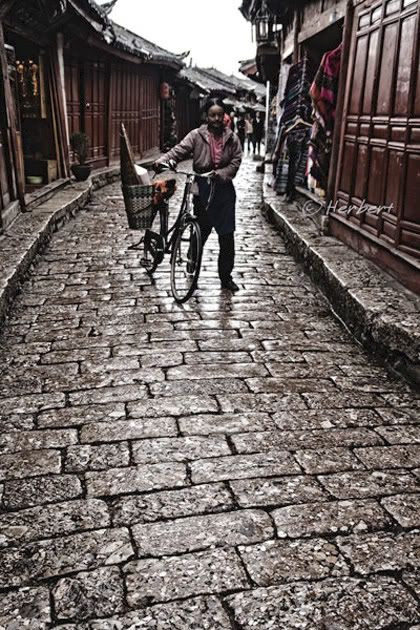
Location: Lijiang Old Town, Yunnan, China (26° 53′ 0″ N, 100° 14′ 0″ E)
Date: 26 August 2007, 8.45am
Camera: Canon 400D with Sigma 17-70/f2.8-4.5
Lijiang Old Town in the north of Yunnan was mainly inhabited by the Naxhi minorities. The town is well known for its innovative ancient drainage system- where water from glacier melts were brought all the way to town- and its huge centuries-old cobblestone streets. It is a tourist magnet and as a result its character had changed tremendously from what it was. When I went to Lijiang the first time in 2003, the Old Town was still a pleasant place with many Naxhi residents. The older Naxhi used to gather at the square in the later part of the day to catch up with each other. There was a community hall where Naxhi's will get together to sing and engage in cultural activities. There was also an orphanage which caters to Naxhi orphans within the Old Town.
All of these were in the past. Nowadays there are very few Naxhi residents in the town; most of the houses are being taken over by commerce and converted into shops. The place is now basically a huge shopping town; tourists mainly engaged in shopping activities.
July 5, 2008
Reflections near Stoneman Bridge, Yosemite
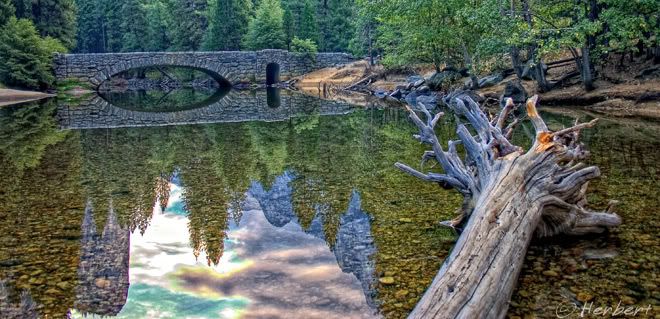
Location: Stoneman Bridge and Merced River, Yosemite, California, USA (37°44'25.80"N,119°34'25.68"W)
Date: 14 September 2006; 7.40am
Camera: Canon EOS 300D with kit lens
Yosemite is one of the most popular National Parks in USA. I think one of the main reasons for its popularity is its proximity to the major population centres and its easy accessibility. However it is also a beautiful place to spend a few days. Like most temperate locations, it presents different colours and beauty in different seasons.
July 3, 2008
Dawn lights at Spitzkoppe, Namibia

Location: Spitzkoppe, Namib Desert, Namibia (21° 49′ 29″ S, 15° 11′ 39″ E)
Date: 18 April 2001; 6.25am
Camera: (analogue) Canon 500N with slides and scanned
The Spitzkoppe is often described as the "Matterhorn of Namibia". The granite massif is situated in the Namib Desert, with the highest outcrop at about 1,784m above sea level. It is not the highest mountain in Namibia but maybe, the most well-known due to its striking outline and its dramatic rise from the endless, dry surrounding plains. The highest peak is about 700m above the floor of the desert below and the island of mountains can be seen from far away.
The granite pile harbours many different unique flora and fauna as well as ancient Bushmen artworks. There are also many beautiful arches and rocks with strange cavities formed from wind and water erosions over the millennia.




















